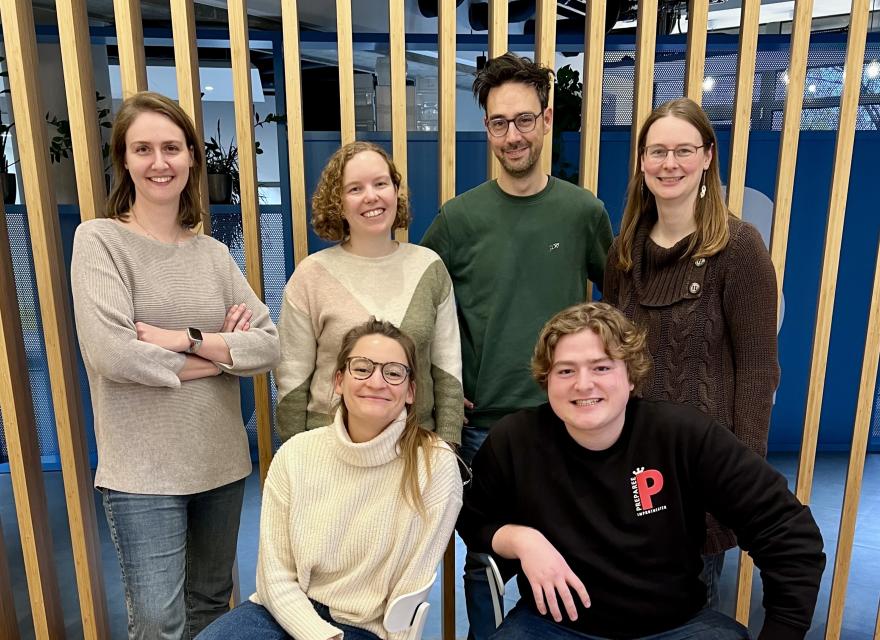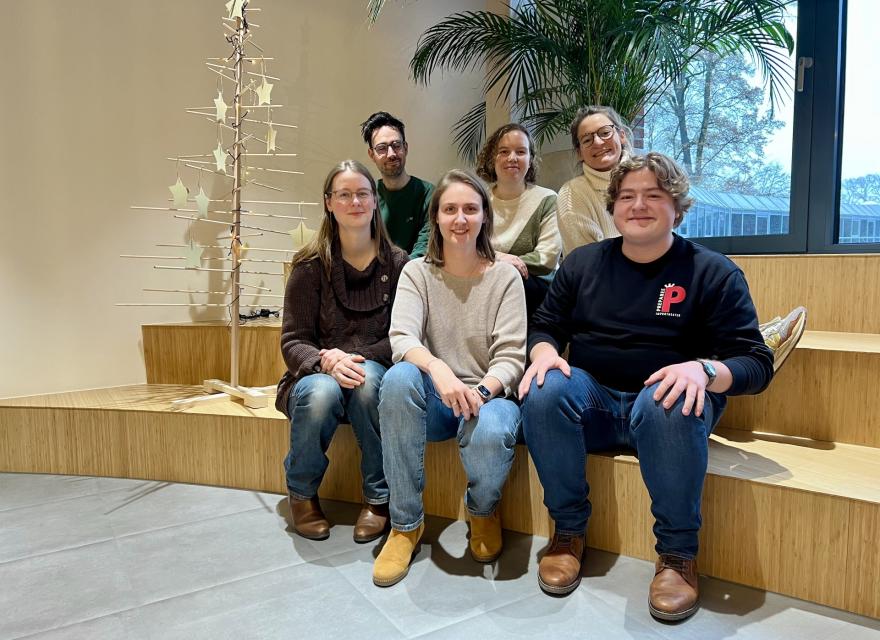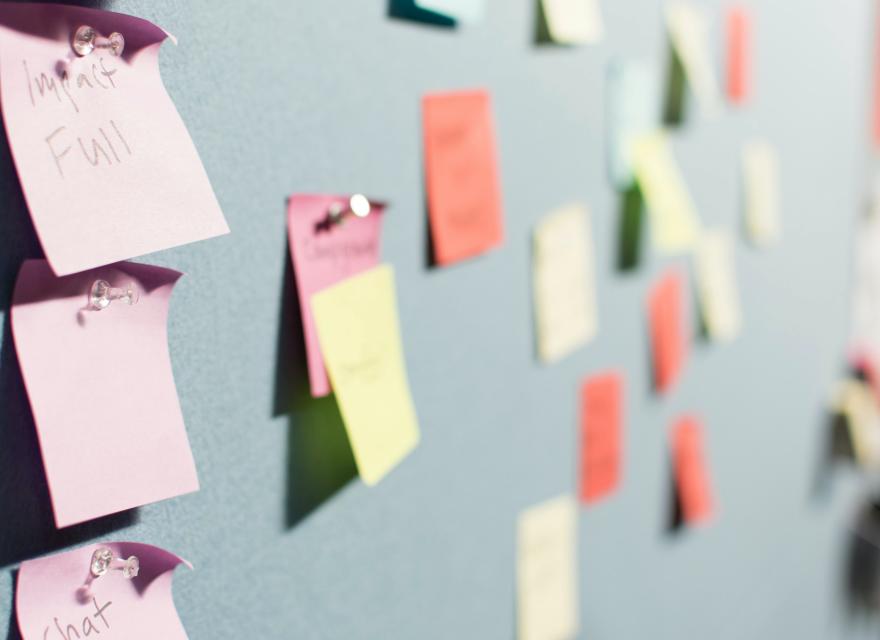Looking back at our workshop: 'Common Challenges in Citizen Science'
On May 31, Scivil organized three parallel workshops on common challenges in citizen science. After two interesting introductory presentations by Luiza Mitrache (AfricaMuseum & Royal Belgian Institute of Natural Sciences) and Thomas Van Oppens (Alderman of IT policy at the City of Leuven), the 40 participants were divided into three breakout sessions to focus on three different topics:
- Common challenges: supporters of citizen science within (research) institutions
- Common challenges: local governments as catalysts for citizen science.
- Common challenges: museums and libraries as hotspots for citizen science.
Below we report on the challenges and solutions discussed in the parallel sessions

Breakout 1: Citizen science supporters
The first breakout group consisted of supporters of citizen science. The members of the group were mostly employees of research institutions and local governments.
The challenges
Many challenges emerged around supporting citizen science within one’s own institution. There is for example a need for more knowledge about citizen science, both among starting and more experienced researchers and support staff. This can be addressed by including citizen science as (part of) a subject in the curricula of higher education, or even by introducing children and young people to citizen science at an early age at school.
Another challenge that emerged was the definition of citizen science. Citizen science is a broad concept that is not strictly defined. This makes it challenging sometimes to talk about it with others and promote this approach, since there is a lack of clarity on what it entails exactly and how it differs from classical research methods or classical participation.
Embedding citizen science structurally is also a challenge for the supporters. They notice a big gap between the ad hoc setting up of citizen science projects by individual researchers, and structurally embedding citizen science throughout the organization. Also (the lack of) continuity of citizen science projects after funding ends complicates the structural embedding. New ways are needed to make the materials and community realised by a project, more sustainable in a sustainable trajectory.
Finally, participants also strongly emphasized the importance of dialogue with citizens, even before the official start of the project. Too often, citizens are only involved when the entire project design has already been thought out, giving them a very limited role or ensuring that the approach to the project is not optimally attuned to the citizens' living environment. Dialogue between project initiators and citizens, from before the start of a project, can serve as an eye-opener for the initiators. Here it is important to adjust the vision of 'expert' and 'layman', but also to recognize citizens for their own unique expertise that they can contribute to a project. In an ideal world, (research) questions also come from citizens and not just from researchers.
Solution 1: mapping the impact of citizen science
An initial challenge that the group of supporters tackled was the following: How can you map the impact and all the positive effects of a citizen science project? Mapping this impact is important to demonstrate the full potential of citizen science to other researchers who are not yet using the method, but also to funders and to citizens who are hesitant to participate in projects.
In addition to an important contribution to research and/or policy in the form of data or other scientific outputs, citizien science projects also have important learning effects on citizen scientists as well as on project initiators. These learning effects, e.g. changes in worldview and behavior, must also be taken into account when assessing the impact of a project. For example, a science or policy project may be a "failure" if no valuable data or conclusions can be drawn from it, but still have very valuable outcomes in the form of learning effects among participants and a changed view of what it is to do research.
To move toward a recognition of this wide range of possible positive effects of citizen science, it is necessary to work toward a different framing of what "good research" means. A framing where there is room for the societal output of the research in addition to the scientific output (peer reviewed publications). Funders of research projects ideally also take these societal outputs into account. Additionally, the KPIs that projects should work towards, should aim for a good mix of quantitative and qualitative KPIs.
Researchers themselves can contribute to this challenge by taking this wide range of possible impacts into account when evaluating their project and by continuing to communicate about the (intended) impact of their project from project initiation until long after the project has ended.
Solution 2: Encouraging using a citizen science approach
The second group tackled the challenge: "How can my organization convince the 'non-informed' to engage in citizen science?" This could be of interest to both novice researchers, who still need to learn about the entire research process, and more experienced researchers, who may get stuck on the many barriers involved in citizen science. It would also benefit citizens by making a wider range of citizenscience projects available to participate in.
The group listed quite a few concrete steps that organizations can take to convince their employees to engage in citizen science. A change management approach can be followed in three steps: 1) inform: what is citizen science? 2) creating emotional attachment to citizen science, and 3) stimulating action.
To inform employees, lunch talks can be organized and a central point with information about citizen science can be set up. Events that support an informal exchange of information can also contribute, such as networking sessions or a buddy system between experienced citizen science researchers and newcomers. In addition, it is important to make the results of projects very visible.
Emotional attachment can be created by focusing on success stories, personal stories of project initiators, inviting citizens or public services into the research institution and using citizen science ambassadors. Finally, spurring action can be supported by organizing practical sessions such as citizen science clinics, setting up a citizen science working group, promoting experimentation with small-scale pilots.
To sustainably encourage a citizen science approach, the context is also important. Such as support from the hierarchy, from the board and managers and an open, flexible organizational culture open to trial and error.
Breakout 2: Libraries, museums and archives
Staff from libraries, museums and archives participated in this session. Some of the participants already had experience with citizen science in their institutions, others did not.
The challenges
Many challenges around citizen science in libraries, museums and archives were formulated during the brainstorming session. The challenges were clustered and discussed in two smaller groups.
A first cluster of challenges concerns dealing with different perspectives and expectations regarding a citizen science project. Involving different stakeholders creates different expectations, which can potentially lead to conflict. How do you deal with this in your project? How do you ensure that there is an open climate from the start of the project to allow space for different perspectives? And if conflicts do arise, how do you deal with them? The importance of creating a win-win situation to keep all parties motivated was also mentioned.
The next challenge that came up was ensuring the quality of the data collected. On the one hand, it can be challenging to have sufficient knowledge around data quality. For example, when a project is set up bottom-up and does not immediately involve a professional researcher, the project team may not have sufficient knowledge on how to ensure data quality. But even when that knowledge is present in the project team, it can be challenging to ensure data quality, for example in terms of time available. How do you deal with this as a project or organization?
A much-discussed challenge was about the target group of a project, where ‘target group’ here includes the participating citizens. Questions such as "How do I motivate citizens to participate?" and "How do I keep citizens interested and motivated throughout the duration of the project?" surfaced among several participants. During the discussion of this topic, there was also a strong emphasis on reaching a diverse target audience.
We also discussed how heritage institutions can support researchers who might want to start a citizen science project. What knowledge, infrastructure or other things are needed from the heritage institution to help researchers get started?
Finally, having sufficient financial resources and manpower also emerged as a challenge. Often the staff of libraries, museums and archives do not have sufficient time available to help shape such projects.
Solution 1: How can heritage institutions support researchers in citizen science?
A first group discussed the question of how heritage institutions can support researchers in starting a citizen-science project. This challenge involves not only heritage institution staff and researchers. Good cooperation between the two parties, also benefits citizen scientists and funders.
The role an institution can play in supporting researchers depends in part on the type of project and institution. The group described some general steps that can be taken to get more clarity on the content of this role. Making a SWOT analysis of the institution could be a first step. The institution can use this to list its strengths and weaknesses, as well as its opportunities and threats. These include the expertise of the institution's staff, its collection, as well as valuable partnerships, etc. On this basis, a potential offer can be determined.
In a next step, a platform could be set up where researchers and heritage institutions can be matched. An institution can indicate what they have to offer, both in terms of expertise and manpower, as well as their collection. Researchers in turn can indicate their research field and interest, and their possible idea for a citizen science project. In this way, a bridge is built between the two. Throughout the process, peer institutions can also be consulted to exchange best practices.
Ideally, an evaluation is conducted after a collaboration. Was the collaboration successful? Were we able to support the researcher in this role? What would we adjust in a next collaboration? What needs have or have not been met?
Solution 2: How to reach a diverse audience?
The second group tackled the challenge around reaching diverse audiences to participate in a citizen science project. It mainly zoomed in on projects that target a broad audience, where there is not so much of a specific requirement to participate. How do you make sure it reaches not only the typical citizen scientist, being an older highly educated man interested in science, but also harder-to-reach target groups?
The group formulated some ideas that could help reach a broader audience. Leveraging existing networks came up several times. Active consideration could be given to identifying some harder-to-reach target groups and then seeking out existing organizations or networks that already have contacts with these target groups.
In addition to existing networks, one can also work with ambassadors. In this case, the ambassadors are citizens who participate in the project and try to inspire other citizens in their neighborhood to participate as well. In this way additional citizens can possibly be reached through a snowball effect.
Important in all these initiatives is to match the communication channels as well as the content of the communication to the target group you wish to reach. For example, for one target group it may be a good idea to spread the project via social media and online channels, but for another project it will be more useful to go door-to-door to inform people about the project. When communicating, you can also start from the different types of motivations citizens may have for participating in a project. You can then use those motivations and interests to tailor your communication accordingly.
Finally, collaboration with schools was also mentioned to reach a more diverse audience. Starting from the idea that all children go to school, so you will be able to reach a more diverse audience, especially if you can also reach parents through the school.

Archieven, bibliotheken en musea

Ondersteuners van citizen science binnen (onderzoeks-)instellingen

Lokale besturen
Breakout 3: local governments
Staff from several Flemish local governments participated in this breakout session. The participants represented predominantly centre cities.
The challenges
The participants in this breakout formulated a lot of questions and challenges. We grouped them loosely into themes. We then went to work in two groups to come up with solutions to two of the challenges.
Internal and external networking
- How can local governments engage knowledge institutions? Not every city or town has a university or college on its territory. Plus, it is often difficult to find out which researchers or departments are interested in collaborating on citizen science.
- How can we get everyone within a local administration on board with citizen science?
- How do we maintain a balance between residents, experts, civil society and government? And what role can a city or municipality play in this?
- On what scale can you do citizen science? What supra-local initiatives exist that municipalities and cities can adopt from each other?
- How can we seek or set up financial incentives for citizen science?
Residents and citizen scientists
- Some research topics provoke negative reactions or polarization more quickly than others. A mobility or air quality measurement heats up tempers more easily than classifying galaxies on telescope images.
- How can we get residents excited about participating in citizen science?
- Citizen science is more than sensors. How can we create citizen science initiatives that do more than collect data, but can also involve the expertise or experiences of residents?
- How can we ensure a more diverse and representative participation in citizen science?
Analysis and research
- How can local governments properly interpret citizen science data?
- What role can AI play in citizen science?
Technical and data
- How can you perpetuate citizen science results? How do you ensure that data remains sustainable and useful?
- How can you monitor data quality?
- How can we standardize data and make it accessible (through APIs)?
- How can sensors or protocols be calibrated?
Ethics and privacy
- How do we protect privacy of residents? Is a larger scale debate around this needed?
- How can we pursue open data without threatening residents' privacy? To what extent can we open up all data if it can show us in a bad light?
Solution 1: How to incentivize citizen science?
The first group tackled the challenge "How to convince administrations, residents and other actors to engage in citizen science”. There are more stakeholders involved in this challenge than the local administration and residents; scientists and politicians also have an important role to play in citizen science and would benefit from a solution.
The group made an important note that the motivation to participate in citizen science varies depending on the type of research being conducted and its duration. Therefore, the participants brought a whole range of actions that can help convince and motivate all these parties.
They underlined the importance of a good communication strategy. Different communication channels can reach specific target groups. It is also important to clearly communicate the efforts needed and the expected impact of a project. The complexity of a project should be reduced as much as possible to keep stakeholders on board. Proper training of citizen scientists is essential. And gamification of research tasks can help to keep participation rates high. The group also considered the possibility of requiring certain stakeholders, such as businesses, to participate or contribute.
Workshop participants saw a role for themselves and their colleagues in leveraging the communication channels a city or town already has in place to reach stakeholders. Local governments can also take on an enabling role for citizen science and further support existing initiatives. Finally, citizen science can also have a place in the policy focus.
For external partnerships or support, this group looked to businesses and nonprofit organizations that can take on a stronger role in citizen science. Action groups are often strongly motivated to contribute to certain studies, but the group also saw risks in involving these players. Finally, participants considered ways to ensure representative participation, such as by drawing lots or using a geographic distribution of participants.
Solution 2: How can we generate win-win situations for local governments, residents, researchers, businesses and CSOs?
To this challenge, the second group first made the comment that on the one hand, all these potential stakeholders may have different expectations towards the citizen-science project, especially on controversial or polarizing topics. On the other hand, however, citizen science is the method of choice for moving from assumptions to objective facts on such topics.
Therefore, it is important to identify the expectations and needs of all parties involved and always communicate clearly. Identifying a common interest that unites all parties is crucial in this regard.
Projects with a limited and concrete goal and defined in time and place help to make even ambitious long-term goals manageable. After all, you can only eat an elephant in small pieces.
This group identified a need for good examples and concrete experiences or tips to exchange between boards and citizen science coordinators. We easily experience the same challenges, so why not share them more? 'What do you do when the power supply to your sensors fails?' 'How do you deal constructively with a contrary resident?' Learning networks of citizen science initiators or interested parties can be embedded in existing networks, such as those of Smart Flanders or KCVS.
In addition, there was the idea that local citizen science ambassadors can "win souls" for citizen science as a method among residents, local government as well as other (local) stakeholders.
Finally, an overview of possible framework agreements or funding would help to bring more citizen science to the local level.
This event could take place thanks to the support of the Interior Administration Agency (ABB) of the Flemish Government.


